Essential Role of First Aid Equipment in the Workplace
Date Posted:11 September 2024
The R1 Vehicle Max First Aid Kit is an invaluable addition to any car, truck, or RV, offering peace of mind and preparedness for unexpected injuries or medical emergencies on the go.
In any workplace, safety should be the top priority. Despite all the precautions and safety measures that may be in place, accidents can and do happen. This is where first aid equipment becomes crucial. Having the right first aid supplies on hand can make the difference between a minor injury and a serious one, ensuring that employees receive immediate care when it’s needed most.
Why First Aid Equipment is Essential
First aid equipment is the first line of defence in treating injuries that occur in the workplace. Whether it’s a minor cut, a burn, or something more severe, immediate access to first aid supplies can prevent complications and stabilise an injured person until professional medical help arrives. Furthermore, it demonstrates an organisation’s commitment to the health and safety of its employees, fostering a culture where staff feel valued and protected.
Key Components of a First Aid Kit
A well-stocked first aid kit is more than just a legal requirement; it’s a vital resource in any workplace. While the exact contents of a first aid kit may vary depending on the specific risks associated with the environment, there are several essential items that should always be included:
- Adhesive bandages: These are a staple in any first aid kit, used to cover minor cuts and abrasions to protect them from infection.
- Sterile dressings: For more significant wounds, sterile dressings are essential. They help to control bleeding and protect the wound from further contamination.
- Antiseptic wipes and ointments: These are used to clean wounds before applying dressings or bandages, reducing the risk of infection.
- Scissors and tweezers: Scissors are used for cutting dressings or clothing if necessary, while tweezers can be used to remove splinters or debris from a wound.
- Cold packs: Instant cold packs are useful for reducing swelling and providing pain relief for sprains or bruises.
- Burn treatment supplies: These include burn dressings and gels, which help to cool the burn and provide relief.
- CPR face shield: In the event of a cardiac emergency, a CPR face shield provides protection for the person administering rescue breaths.
- Eye wash solution: For workplaces where there’s a risk of eye injuries, an eye wash solution is crucial for flushing out irritants or chemicals.
- Gloves: Non-latex gloves are essential for protecting both the injured person and the first aider from infection.
Tailoring First Aid Kits to Your Workplace
Different workplaces have different needs when it comes to first aid equipment. A construction site, for example, will have different risks compared to an office environment. It’s important to assess the specific hazards of your workplace and tailor your first aid kits accordingly. This might include adding items such as snake bite kits for outdoor workers, or additional burn care products for kitchens or manufacturing facilities.
Moreover, it’s not just about having the right equipment; it’s also about ensuring that it’s easily accessible. First aid kits should be strategically placed in areas where accidents are most likely to occur, and all employees should know where to find them. Regular checks should also be conducted to ensure that all supplies are in good condition and have not expired.
Training and Preparedness
Even the best first aid equipment is of little use if employees aren’t trained to use it. Providing regular first aid training ensures that staff are confident and capable of responding to emergencies. Training sessions should cover basic first aid skills, including how to use the items in the first aid kit, how to perform CPR, and how to handle specific injuries that might occur in your workplace.
Preparedness also involves having clear procedures in place for what to do in the event of an injury. This includes knowing who to call for help, how to evacuate the injured person if necessary, and how to document the incident for future reference.
Maintaining a Safe Workplace
A safe workplace is one where employees feel confident that they will be looked after if something goes wrong. By providing comprehensive first aid equipment and ensuring that all staff are trained in its use, employers can significantly reduce the severity of workplace injuries and contribute to a safer, more secure working environment.
In conclusion, first aid equipment is a critical component of workplace safety. It not only helps to mitigate the effects of injuries but also reinforces a culture of care and responsibility within the workplace. By staying prepared and ensuring that your first aid supplies are always up to date and accessible, you can make a significant difference in the well-being of your team.
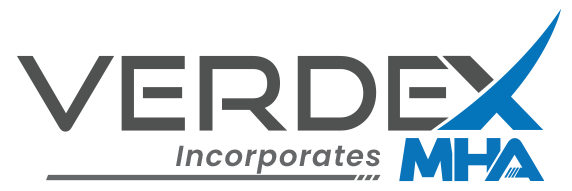
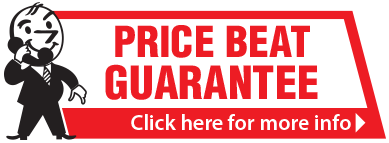

































































































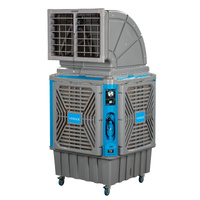










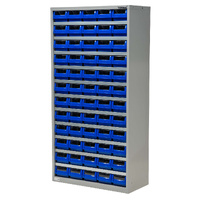

















 Trolleys & Hand Trucks
Trolleys & Hand Trucks Cage Trolleys
Cage Trolleys Cleaning Carts & Trolleys
Cleaning Carts & Trolleys Construction Trolleys
Construction Trolleys Custom Trolleys
Custom Trolleys Hand Trucks & Dollies
Hand Trucks & Dollies Laundry/Linen Trolleys
Laundry/Linen Trolleys Lifting Trolleys
Lifting Trolleys Order Picking Trolleys
Order Picking Trolleys Panel Cart Trolleys
Panel Cart Trolleys Platform Trolleys
Platform Trolleys Powered Trolleys
Powered Trolleys Shelf & Tiered Trolleys
Shelf & Tiered Trolleys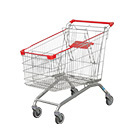 Shopping Trolleys
Shopping Trolleys Stainless Steel Trolleys
Stainless Steel Trolleys Tool Trolleys
Tool Trolleys Utility & Service Carts
Utility & Service Carts Lifting & Handling Equipment
Lifting & Handling Equipment Forklift Attachments
Forklift Attachments Jib Attachments
Jib Attachments Lifting Hoists & Pallet Hooks
Lifting Hoists & Pallet Hooks Load Skates & Tow Tugs
Load Skates & Tow Tugs Manual Stackers & Lifters
Manual Stackers & Lifters Pallet Jacks
Pallet Jacks Pallet Lifters
Pallet Lifters Pallet Rotators & Dispenser
Pallet Rotators & Dispenser Powered Pallet Trucks & Electric Lifters
Powered Pallet Trucks & Electric Lifters Scissor Lift Trolleys and Tables
Scissor Lift Trolleys and Tables Conveyor Equipment
Conveyor Equipment Conveyor Frames & Stands
Conveyor Frames & Stands Roller & Skate Conveyors
Roller & Skate Conveyors Ladders & Access Equipment
Ladders & Access Equipment Container & Yard Ramps
Container & Yard Ramps Ladders & Step Stools
Ladders & Step Stools Work Platforms & Crane Cages
Work Platforms & Crane Cages Drum Handling Equipment
Drum Handling Equipment Drum Storage & Bunding
Drum Storage & Bunding Drum Trolleys & Lifters
Drum Trolleys & Lifters Forklift Drum Handling
Forklift Drum Handling Waste Handling & Bins
Waste Handling & Bins Bin Lifters & Tippers
Bin Lifters & Tippers Plastic Waste & Wheelie Bins
Plastic Waste & Wheelie Bins Steel Waste & Tipping Bins
Steel Waste & Tipping Bins Waste Carts
Waste Carts Dangerous Goods Storage & Spillage
Dangerous Goods Storage & Spillage Aerosol Cans Storage Cages
Aerosol Cans Storage Cages Bunded Pallets & Storage
Bunded Pallets & Storage Corrosive Goods Storage Cabinets
Corrosive Goods Storage Cabinets DG Storage & Trolleys
DG Storage & Trolleys Flammable Liquid Cabinets
Flammable Liquid Cabinets Forklift Gas Storage Cages
Forklift Gas Storage Cages Site Storage
Site Storage Spill Kits
Spill Kits Shelving & Storage Equipment
Shelving & Storage Equipment Stillage & Transport Cages
Stillage & Transport Cages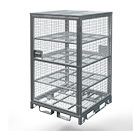 750 Series Cage Configurations
750 Series Cage Configurations Heavy Duty Cabinets
Heavy Duty Cabinets Heavy Duty Shelving
Heavy Duty Shelving Mega Bins & Pallets
Mega Bins & Pallets Packing & Workbenches
Packing & Workbenches Parts Trays & Stor-Pak Bins
Parts Trays & Stor-Pak Bins Pegboard & Louvre Panels
Pegboard & Louvre Panels Plastic Bins & Crates
Plastic Bins & Crates Plastic Handling Solutions Bins
Plastic Handling Solutions Bins Plastic Pallets
Plastic Pallets Stack & Nest Bins
Stack & Nest Bins Pallet Racking Accessories
Pallet Racking Accessories Workplace Equipment
Workplace Equipment Modular Workbenches
Modular Workbenches Electric Height-Adjustable Workbenches
Electric Height-Adjustable Workbenches Floor Matting
Floor Matting General Workplace Equipment
General Workplace Equipment Industrial Weighing Scales
Industrial Weighing Scales Packaging Machinery
Packaging Machinery Stationery Cupboards
Stationery Cupboards Storage and Stillage Cages
Storage and Stillage Cages Tool Trolleys
Tool Trolleys Tooling Cabinets
Tooling Cabinets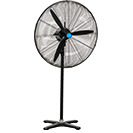 Workshop Fans and Coolers
Workshop Fans and Coolers Safety Barriers, PPE & Signage
Safety Barriers, PPE & Signage Barriers & Bollards
Barriers & Bollards First Aid Equipment
First Aid Equipment Gloves, Knives and PPE
Gloves, Knives and PPE Signage
Signage Cleaning & Site Supplies
Cleaning & Site Supplies Cleaning Equipment
Cleaning Equipment Cleaning Trolleys
Cleaning Trolleys Rubbish Bins
Rubbish Bins Signs & Traffic Supplies
Signs & Traffic Supplies Construction Equipment
Construction Equipment Construction Trolleys
Construction Trolleys Waste Handling
Waste Handling General Site Equipment
General Site Equipment Concrete Equipment
Concrete Equipment Site Storage
Site Storage Lifting Equipment
Lifting Equipment Verdex Specials
Verdex Specials










